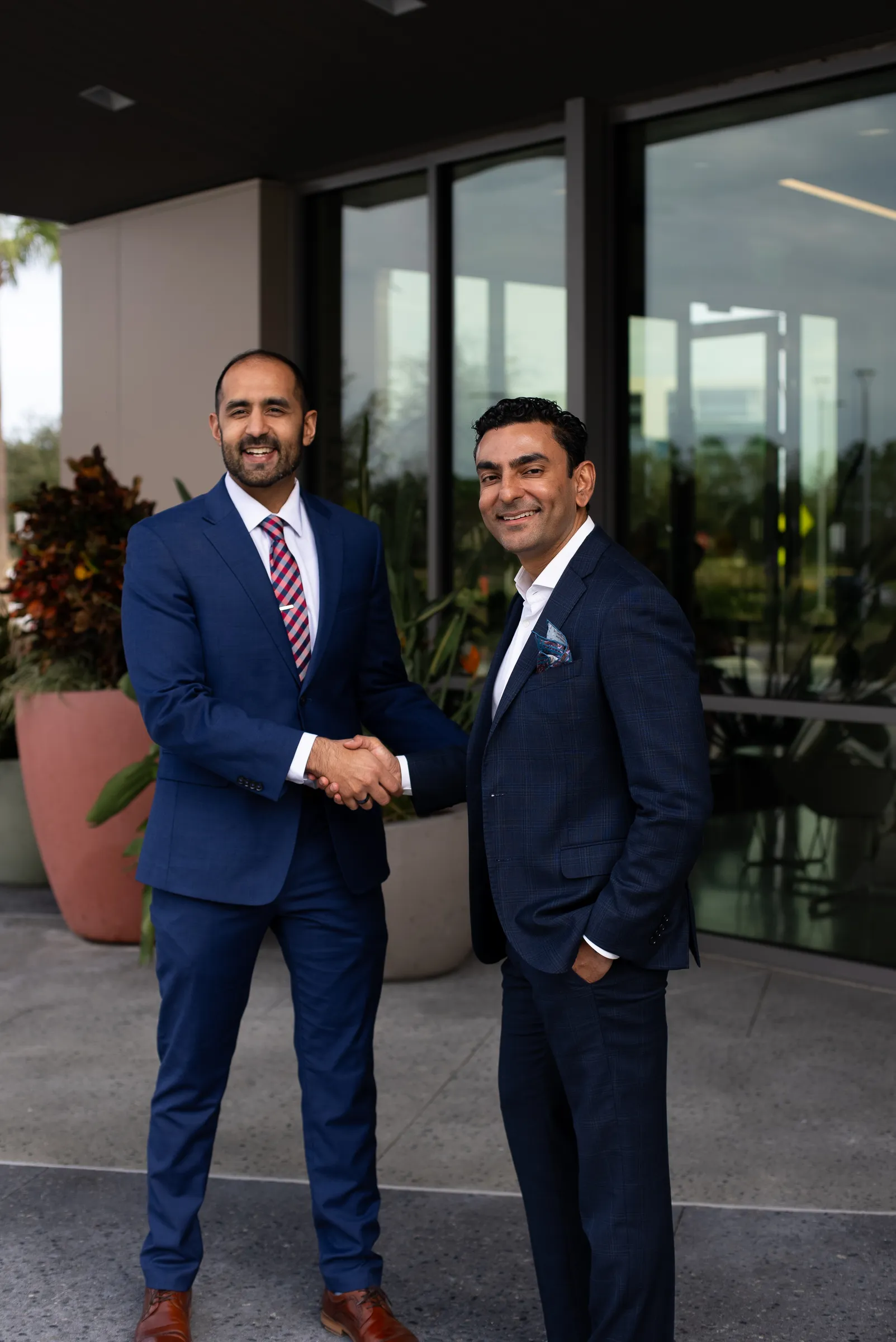It’s been said that the eyes are the window to the soul, but did you know that they can also serve as the window to your health? It’s true and having your eyes checked regularly can help identify and diagnose diseases you may not be aware you have. Raised in Central Florida, Chirag Patel, M.D., is a fellowship trained ophthalmologist preparing to open a practice in Lake Nona. Below are several questions he often hears from patients at his current office.
Why is it important to have your eyes checked regularly?

What does a comprehensive eye exam involve?
A complete examination of the eyes evaluates the visual, motor and sensory aspects of the organ. First, visual acuity is measured at distance and close range. This measures how well one sees, whether it is 20/20 or 20/100. Typically, the best-corrected acuity is determined by assessing the need for corrective lenses (glasses or contacts). Next, the reaction of pupils to light is observed. The movement of the eyes in each cardinal direction is then examined. Any asymmetry or limitation in the movement of the eyes may denote an eye muscle issue. The pressure of each eye is checked next. Intraocular pressure is an independent risk factor for the development of Glaucoma. The last portion of the examination involves direct examination of each eye under high magnification with a tool known as the Slit Lamp. During this test, the eyelids, eyelashes, tear film, cornea, iris and lens are viewed directly. The eyes are then dilated to enlarge the pupil and permit direct visualization of the optic nerve and retina with specialized lenses. During this portion, the health of the nerve, blood vessels and retina are assessed.
What kind of technology is used in assessing the health of the eye?
Technology is at the forefront of ophthalmology. Specialized lasers, cameras and scanners are very useful during a comprehensive eye examination. For instance, Ocular Coherence Tomography (OCT) is a very important tool in assessing a patient with diabetes, macular degeneration or other disease of the retina. The OCT is essentially a CT scan of the retina, a thin tissue that lines the back of the eye; it’s like the film of a camera. The OCT can display areas of swelling, thinning or damage. It often dictates treatment of retinal disease. Another device helpful for patients thinking about cataract surgery or even laser refractive surgery (LASIK/PRK) is the OPD III Scan. The machine measures multiple details of the eye, including a surface map of the cornea, to help the ophthalmologist determine the best course of action for each patient. It also assists in evaluating a patient’s candidacy for the insertion of a Premium IOL after cataract surgery, or for having refractive laser surgery. Although more devices are available that are just as important, such as a Visual Field Machine, or Fluorescein Angiography, the gist is that the use of technology and providing comprehensive eye care go hand-in-hand.
Talk a little bit about some of the autoimmune diseases that can be detected during an eye exam in your office. What symptoms may present themselves in the eye for these diseases?
Autoimmune disease, such as lupus or rheumatoid arthritis, may manifest in the eye at anytime during the disease process. Often, autoimmune disease directly affecting the eye may present with inflammatory signs within the eye itself, such as light sensitivity, pain, redness, or blurry vision. The “inflammation” can actually be seen by the ophthalmologist and is typically termed, uveitis. A first time episode of uveitis can actually help uncover a systemic autoimmune disease by running a panel of specific labs. In the presence of an active autoimmune disease, the inflammation of the eye may warrant worsening systemic disease and the need for more aggressive treatment. Uveitis related to autoimmune disease is typically treated with steroids, either topically with drops or with local injections. Once diagnosed with any autoimmune disease, routine eye examinations are recommended at least yearly.
What are some common diseases of the eye?
Four common diseases of the eye include glaucoma, cataracts, macular degeneration and diabetic retinopathy.
Glaucoma is the second leading cause of blindness worldwide and affects one in 200 people aged 50 and younger. Characteristic optic nerve damage occurs with or without high pressures in the eye causing loss of peripheral vision. It is referred to as the “silent thief of sight” because noticeable symptoms do not occur until late stages of the disease.
Cataracts the leading cause of blindness worldwide. A cataract is an age-related clouding of the natural lens in the eye. Symptoms may include blurry vision, glare, halos, and difficulty with night driving. Trauma to the eye as well as certain medications, such as steroids, can also cause a cataract. If significant, a cataract can be treated with surgery.
Macular degeneration usually affects older adults and results in a loss of vision in the center of the visual field (the macula) because of damage to the retina. It is a major cause of blindness and visual impairment in older adults. Macular degeneration can make it difficult or impossible to read or recognize faces. Although no current cure exists, recent advances in ophthalmology have made the disease manageable.
Diabetic retinopathy is described as an ocular manifestation of diabetes and the leading cause of blindness in American adults. It may affect up to 80 percent of all patients who have had diabetes for 10 years or more. Individuals with uncontrolled blood sugars, or lengthy duration of diabetes, may present with focal areas of bleeding and swelling within the retina. A routine eye examination is recommended upon diagnosis of diabetes and yearly thereafter.


